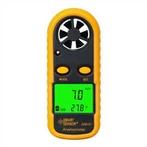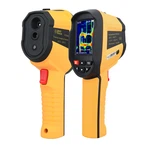What Precautions Should Be Taken with Lux Meters?
① Selenium (Se) or silicon (Si) photovoltaic cells with good linearity should be used for photovoltaic applications; Long term work can still maintain good stability and high sensitivity; When using high E, choose photovoltaic cells with high internal resistance, which have low sensitivity and good linearity, and are not easily damaged by strong light irradiation
② Equipped with a V (λ) correction filter, suitable for illumination with different color temperature light sources, with small errors
③ The reason for adding a cosine angle compensator (milky white glass or white plastic) in front of the photovoltaic cell is that when the incident angle is large, the photovoltaic cell deviates from the cosine rule
④ The illuminance meter should operate at or near room temperature (the drift of the photovoltaic cell changes with temperature)
Calibration of illuminance meter:
Illuminate the photovoltaic cell vertically with Ls → E=I/r2, and change r to obtain the photocurrent values under different illuminance. Convert the current scale to the illuminance scale based on the correspondence between E and i.
Calibration method:
Using a light intensity standard lamp, at an approximate working distance of a point light source, change the distance l between the photovoltaic cell and the standard lamp, record the readings of the ammeter at each distance, and calculate the illuminance E using the inverse distance square law E=I/r2. From this, a series of different illuminance photocurrent values i can be obtained, and the variation curve of photocurrent i and illuminance E can be made, which is the calibration curve of the illuminance meter. The calibration curve of the illuminance meter can be divided by the dial of the illuminance meter, which is the calibration curve of the illuminance meter
Factors affecting the calibration curve:
When replacing photovoltaic cells and ammeters, recalibration is required; After using the illuminance meter for a period of time, it should be recalibrated (usually 1-2 times a year); High precision illuminance meters can be calibrated using standard light intensity lamps; Expanding the fixed range of the illuminance meter can change the distance r, and different standard lamps can also be used to select a small range ammeter.






